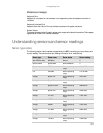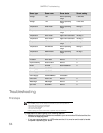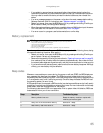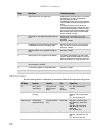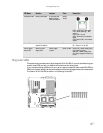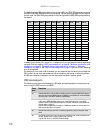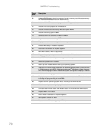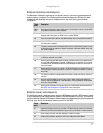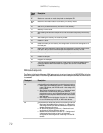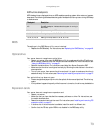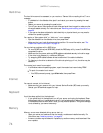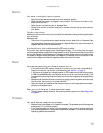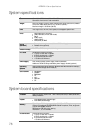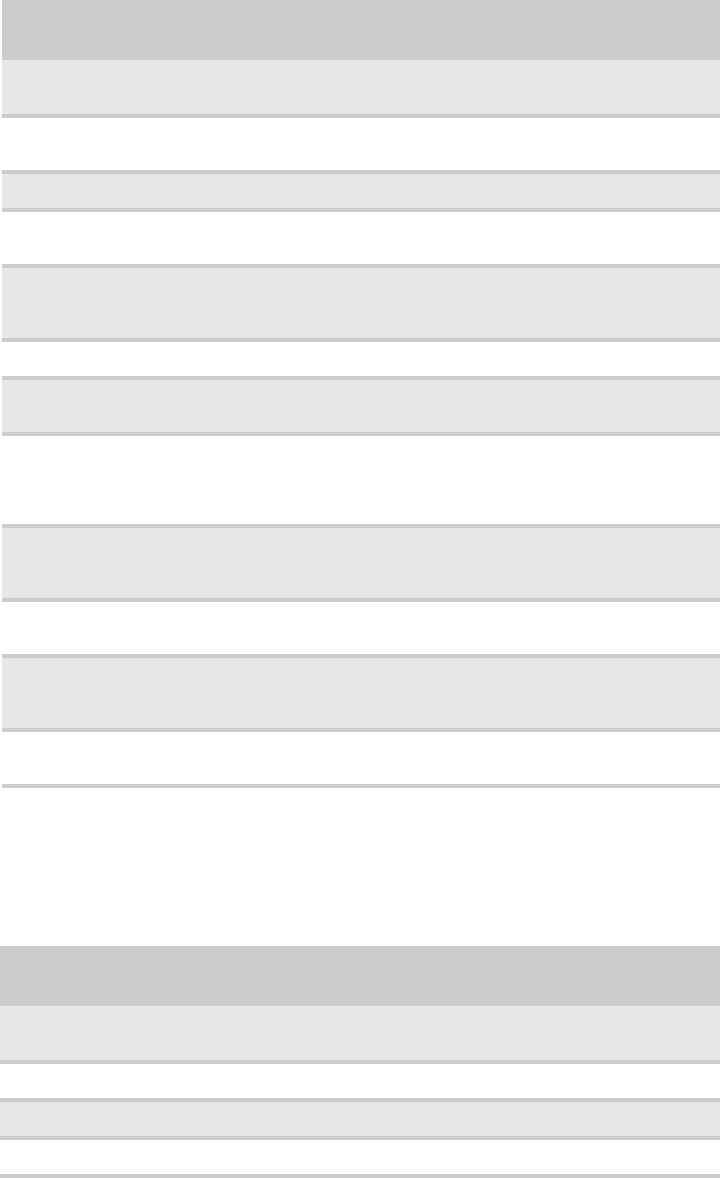
www.gateway.com
71
Bootblock initialization code checkpoints
The Bootblock initialization code sets up the chipset, memory, and other components before
system memory is available. The following table provides the diagnostic LED code for these
checkpoints and describes the type of checkpoints that may occur during the bootblock
initialization:
Bootblock recovery code checkpoints
The bootblock recovery code gets control when the BIOS determines that a BIOS recovery needs
to occur because the user has forced the update or the BIOS checksum is corrupt. The following
table provides the diagnostic LED codes for these checkpoints and describes the type of checkpoints
that may occur during the Bootblock recovery portion of the BIOS:
Check
point
Description
Before
D1h
Early chipset initialization is done. Early super I/O initialization is done, including RTC
and keyboard controller. NMI is disabled.
D1 Perform keyboard controller BAT test. Check if waking up from power management
suspend state. Save power-on CPUID value in scratch CMOS.
D0 Go to flat mode with 4 GB limit and GA20 enabled. Verify the bootblock checksum.
D2 Disable CACHE before memory detection. Execute full memory sizing module. Verify
that flat mode is enabled.
D3 If memory sizing module not executed, start memory refresh and do memory sizing
in Bootblock code. Do additional chipset initialization. Re-enable CACHE. Verify that
flat mode is enabled.
D4 Test base 512 KB memory. Adjust policies and cache first 8 MB. Set stack.
D5 Bootblock code is copied from ROM to lower system memory and control is given to
it. BIOS now executes out of RAM.
D6 Both key sequence and OEM-specific method is checked to determine if BIOS recovery
is forced. Main BIOS checksum is tested. If BIOS recovery is necessary, control flows
to checkpoint E0. See Bootblock Recovery Code Checkpoints section of document for
more information.
D7 Restore CPUID value back into register. The Bootblock-Runtime interface module is
moved to system memory and control is given to it. Determine whether to execute
serial flash.
D8 The Runtime module is uncompressed into memory. CPUID information is stored in
memory.
D9 Store the Uncompressed pointer for future use in PMM. Copying Main BIOS into
memory. Leaves all RAM below 1 MB Read-Write, including E000 and F000 shadow
areas, but closing SMRAM.
DA Restore CPUID value back into register. Give control to BIOS POST (ExecutePOSTKernel).
See “POST code checkpoints” on page 68 for more information.
Check
point
Description
E0 Initialize the floppy controller in the super I/O. Some interrupt vectors are initialized.
DMA controller is initialized. 8259 interrupt controller is initialized. L1 cache is enabled.
E9 Set up floppy controller and data. Attempt to read from floppy.
EA Enable ATAPI hardware. Attempt to read from ARMD and ATAPI CDROM.
EB Disable ATAPI hardware. Jump back to checkpoint E9.



